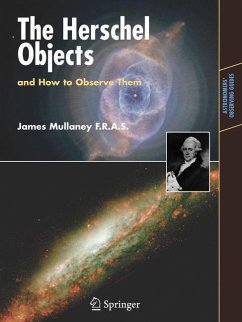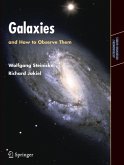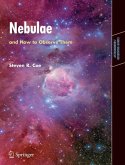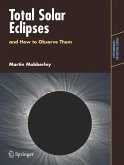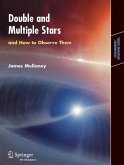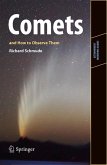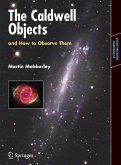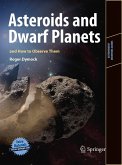Amateur astronomers - particularly deep-sky observers - are always on the lookout for new observing challenges. The Herschel Objects, and How to Observe Them offers the exciting opportunity of retracing the steps of the greatest visual observer and celestial explorer that ever lived. This is a practical guide to seeing the most impressive of Herschel's star clusters, nebulae and galaxies.
There has never been - and as of the time of submitting this proposal there still isn't - an observer's book devoted to the Herschel objects. The US-based Astronomical League has for several years sponsored a "Herschel Club", reflecting the interest amateur astronomers have in this important but less widely known listing. The Herschel Objects, and How to Observe Them covers more than 600 of the brightest of the objects that Herschel saw, with detailed descriptions and images of 150 to 200 of the very best for viewing with amateur telescopes.
There has never been - and as of the time of submitting this proposal there still isn't - an observer's book devoted to the Herschel objects. The US-based Astronomical League has for several years sponsored a "Herschel Club", reflecting the interest amateur astronomers have in this important but less widely known listing. The Herschel Objects, and How to Observe Them covers more than 600 of the brightest of the objects that Herschel saw, with detailed descriptions and images of 150 to 200 of the very best for viewing with amateur telescopes.
From the reviews:
"Mullaney packs an incredible amount of information into this 166-page book. ... All in all, The Herschel Objects, and how to observe them is engaging, challenging, well-written, and comprehensive. So, if you love deep-sky observing - and even if you've observed the Astronomical League's Herschel 400 - Mullaney's book offers a new list with several hundred additional objects you'll enjoy." (Michael Bakich, Astronomy Magazine, October, 2007)
"The Herschel Objects and How to Observe Them is a fine addition to the Springer series of observing guides. Mullaney has been observing the Herschel objects for many years and his passion for them clearly comes across. ... Overall though, this is a book that will be a useful addition to any deep-sky observer's library." (Paul Money, BBC Sky at Night, February, 2008)
"Mullaney begins with a well-written biographical sketch of Herschel and his family, and explains the significance of the work of this great observational astronomer. ... the objects are illustrated with excellent images obtained using a modern charge-coupled device (CCD) system. The book concludes with a list of 618 targets that would provide for a lifetime of study. The book will be of greatest interest to experienced observers who wish to push on to the most challenging deep sky objects. ... Summing Up: Recommended. General readers." (D. E. Hogg, CHOICE, Vol. 45 (6), February, 2008)
"The book opens with a few short chapters on Herschel himself together with a brief introduction to observing techniques ... . rounded out with some objects that the author regards as showpieces that were not discovered by Herschel. Any collection of these will of course be very subjective. ... I found the book's reproductions to be a cut above the usual Springer ones and the book does offers something sufficiently different ... and the Astronomical League guides to make it worth adding to your collection."(Owen Brazell, The Observatory, Vol. 128 (1203), 2008)
"Mullaney packs an incredible amount of information into this 166-page book. ... All in all, The Herschel Objects, and how to observe them is engaging, challenging, well-written, and comprehensive. So, if you love deep-sky observing - and even if you've observed the Astronomical League's Herschel 400 - Mullaney's book offers a new list with several hundred additional objects you'll enjoy." (Michael Bakich, Astronomy Magazine, October, 2007)
"The Herschel Objects and How to Observe Them is a fine addition to the Springer series of observing guides. Mullaney has been observing the Herschel objects for many years and his passion for them clearly comes across. ... Overall though, this is a book that will be a useful addition to any deep-sky observer's library." (Paul Money, BBC Sky at Night, February, 2008)
"Mullaney begins with a well-written biographical sketch of Herschel and his family, and explains the significance of the work of this great observational astronomer. ... the objects are illustrated with excellent images obtained using a modern charge-coupled device (CCD) system. The book concludes with a list of 618 targets that would provide for a lifetime of study. The book will be of greatest interest to experienced observers who wish to push on to the most challenging deep sky objects. ... Summing Up: Recommended. General readers." (D. E. Hogg, CHOICE, Vol. 45 (6), February, 2008)
"The book opens with a few short chapters on Herschel himself together with a brief introduction to observing techniques ... . rounded out with some objects that the author regards as showpieces that were not discovered by Herschel. Any collection of these will of course be very subjective. ... I found the book's reproductions to be a cut above the usual Springer ones and the book does offers something sufficiently different ... and the Astronomical League guides to make it worth adding to your collection."(Owen Brazell, The Observatory, Vol. 128 (1203), 2008)

